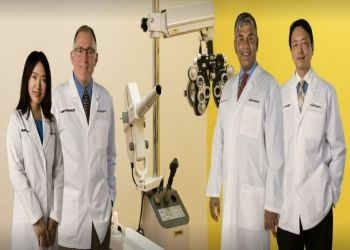


The researchers said they are hoping to collect more data to increase the accuracy of their genetic prediction tool and find even more genes linked to glaucoma risk. "If we can find people before the disease develops, we can prevent blindness in those people," said Associate Professor Gharahkhani. We can use our genetic discoveries to identify those who are at higher risk. "Glaucoma is one of the most strongly genetic of all human diseases. Lead author Associate Professor Puya Gharahkhani from QIMR Berghofer said the findings are also helping to develop a genetic test to predict a person's risk of developing glaucoma. This could rapidly advance effective treatment to finally prevent retina and optic nerve damage." "We've also identified existing drugs that could be used on those genetic targets. "Our findings are really exciting because for the first time we've discovered the set of genes that could be targeted to induce this 'neuro-protection' in the retinal cells. The dream has always been to find a way to make the retina itself stronger so it can withstand the build-up of pressure and prevent the damage that causes permanent blindness. "Existing treatments focus only on lowering eye pressure. You don't realise what's happening until you've already suffered permanent damage and loss of vision," said Professor MacGregor. You lose your peripheral vision first, and then one eye often covers for the loss of sight in the other. Lead researcher Professor Stuart MacGregor, QIMR Berghofer's Statistical Genetics Laboratory, said the discoveries could rapidly accelerate a new approach to treatment. The disease causes pressure from fluid in the eye to build up, causing damage to the retina and the optic nerve.Īround 50 per cent of all glaucoma cases are not diagnosed until permanent optic nerve damage has occurred. Glaucoma is the leading cause of irreversible blindness globally, affecting over 75 million people worldwide, including 300,000 Australians. The research has identified another 185 previously unknown genes linked to glaucoma risk, bringing the total number to 312 genes. The findings, from the largest-ever global genetic study of the degenerative eye disease, have been published in the prestigious journal Nature Genetics. The research includes genetic targets that could, for the first time, pave the way for treatments that prevent the retinal damage that causes blindness. In addition, Dr.International research led by QIMR Berghofer has found hundreds of new genes linked to a person's risk of developing glaucoma. Chen has published over 45 scientific papers, book chapters, and national meeting abstracts on vitreoretinal surgery, diabetic retinopathy, macular degeneration, and the use of intravitreal medications.

Chen moved back to Texas where he practiced in Austin for a year, and was then recruited and brought on as retinal surgeon by the Retina Consultants of Texas. He then went on to complete the prestigious, two-year medical retina/retina surgery fellowship program at the Wills Hospital in Philadelphia (a program that is consistently rated among the top three programs in the entire nation). He completed his ophthalmology residency at Vanderbilt Eye Institute in Nashville, where he was appointed and served as chief resident. Chen continued on to the Baylor College of Medicine where he earned his medical degree. Graduating with top honors from Stanford University where he completed his undergraduate degree, Dr. He uses both surgery and nonsurgical treatments to help patients overcome, manage, and resolve their eye condition. His research interests include diabetic retinopathy, age-related macular degeneration, and surgical disorders of the macula and retina. Through advanced diagnostics, he is able to accurately diagnose a number of retina-related disorders and discuss various options for treatment. Chen works with individuals of all ages to help uncover the root cause of their eye condition. Common Eye Surface Problems - Blepharitis, Dry Eye, Subconjuntival Hemorrhageĭr.Idiopathic Parafoveal Telangiectsasia (PFT).Central Serous Retinopathy / Chorioretinopathy.Retinal Artery Occlusion (CRAO and BRAO).Peripheral Retinal Pathology - Lattice Degeneration, White Without Pressure, Pigmented Lesions and Masses.Panretinal Photocoagulation (PRP) Laser.


 0 kommentar(er)
0 kommentar(er)
